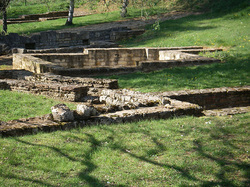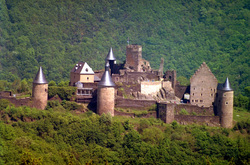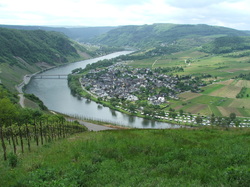Settlement Patterns and History
Celtic Tribes

The remains of an oppida in Luxembourg
Luxembourg was first inhabited by the Celts. There is evidence that people lived in Luxembourg up to 35,000 years ago. However, the first communities are estimated to have been formed at the Beginning of the Bronze Age (13,000-3,000 B.C.). The Celts that inhabited Luxembourg created semi-permanent fort-like dwellings, called oppida. The Celts also built several necropolises that were filled with evidence of primitive transportation, weapons and jewelry. One of the most prominent Celtic tribes was the Treveri. The Treveri lived in southern Luxembourg, due to the close proximity to roads leading to the two major rivers around Luxembourg; the Moselle and the Rhone. The Treveri also lived in southern Luxembourg due to the large iron ore deposits there. The Treveri were eventually conquered by the Romans, but they had developed metallurgy and were capable farmers before that time.
Beginnings of Modern Civilization

A castle in Luxembourg around the Ardennes region
Luxembourg Castle was built by Count Siegfried I in 963. Soon after, towns began to pop up around the Roman fort. Luxembourg was highly valued by the empires at the time as it was a strategic point in Europe. Luxembourg was made a duchy by Emperor Charles IV in 1354. Over the course of several centuries, possession of Luxembourg changed hands between surrounding empires like the French. After the defeat of Napoleon in 1815, Luxembourg gained independence from French and soon after, it gained total independence from other countries that claimed Luxembourg as their territory in 1867 with the Treaty of London.

